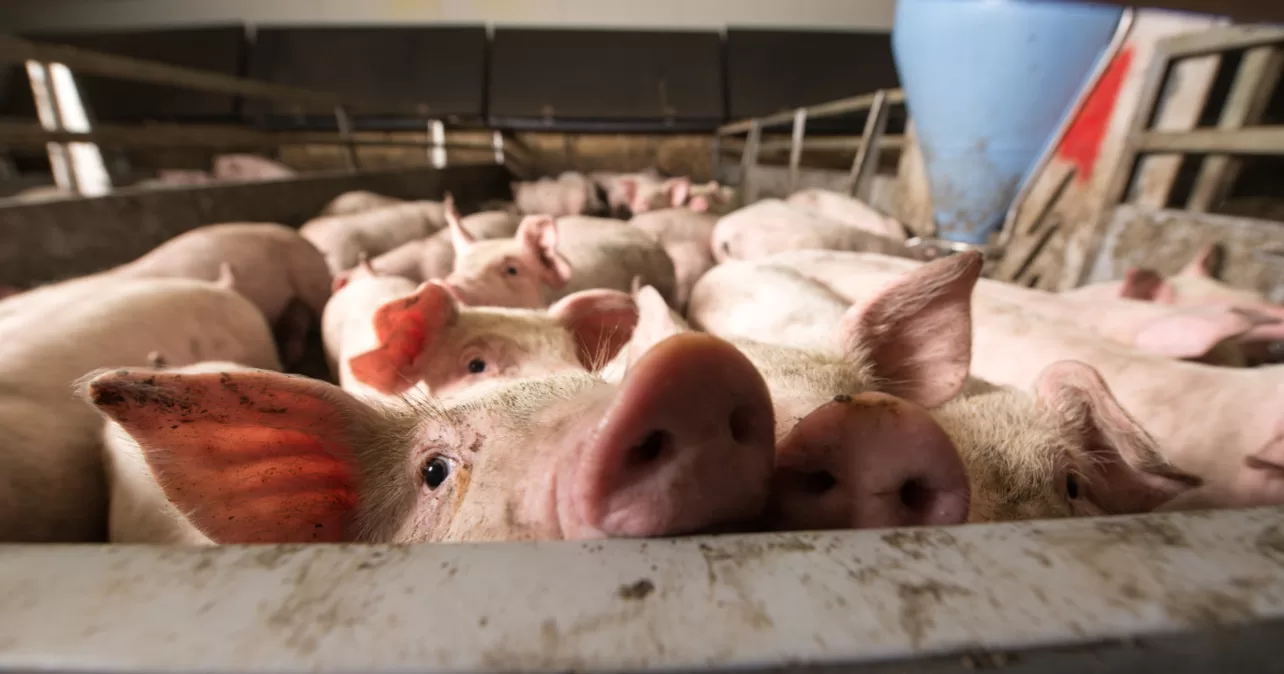Share
This guide provides instructions on how to navigate Ohio CAFO databases, comment on pending CAFO permit applications, find past CAFO violations, create custom aerial maps of CAFOs, and more. If you have any questions or comments, please contact: WaterRangers@sraproject.org
Use this site to identify CAFOs that hold National Pollutant Discharge Elimination System (NPDES) Permits.
To search for CAFOs that hold NPDES permits:*
- Click “Ok” if the disclaimer message appears
- Zoom in to the area you want to search or use the address search bar to search for a specific area
- Click the orange tags to get information for a specific CAFO
- Note: the blue permit number link does not go to the permit information; it takes you to the general Ohio EPA website.
*Note: This map is limited to CAFOs that have NPDES permits, which are a small minority of CAFOs in the state. Most CAFOs have Permits to Install/Operate from the Ohio Department of Agriculture (see below).
Ohio CAFO Permit to Operate (PTO) and Permit to Install (PTI)
Use these sites to understand the permits required for CAFOs (*CAFFs) to be built and operated.
To find information on:
- Permit to Operate (PTO)
- Use this site to find information for the PTO permit required for CAFOs (CAFFs) to operate in Ohio
- Permit to Install (PTI)
- Use this site to find information about the PTI permit required to develop a new CAFO (CAFF) or modify an existing facility
How to request specific PTO or PTI permit documents
- Go to Ohio DOA Public Records Site
- Click “Launch” in the upper right corner of the webpage to start a Public Records Act request
- Fill out the form and click “Submit.”
*Note: Ohio differentiates between CAFOs and CAFFs. CAFOs are livestock operations that discharge waste into waters of the state and therefore need an NPDES permit regulated by Ohio EPA (Environmental Protection Agency). CAFFs (Concentrated Animal Feeding Facilities) are livestock operations that say they don’t discharge waste into waters of the state and therefore need a Permit to Operate (PTO) regulated by Ohio DOA (Department of Agriculture).
How to Submit a Public Comment
Use this information to submit a public comment on pending CAFO (CAFF) Permit to Operate (PTO) and Permit to Install (PTI) applications.
To receive email notification of each public notice of new CAFO permit applications:
- Send an email request to lepp@agri.ohio.gov or call (614) 387-0470
- In your email, indicate if you’d like to be added to a statewide notification list, a specific county notification list, or both
- You’ll be notified via email when a CAFO permit application goes on public notice.
To submit a public comment or request a public meeting:
- Comment:
- Email your comments to lepp@agri.ohio.gov
- Fax or mail your comments to the addresses listed on the website
- The public comment period ends 30 days after the permit application was put on public notice
- Public Meeting
- Anyone can request a public meeting about a permit application
- The public meeting request must be in writing, state the nature of the issues to be raised at the public meeting, and be sent to the same email, fax, or mail addresses listed on the website
- The public may request a public hearing during the 30-day public comment period that follows public notice of an application. A public hearing will be held if the Department of Surface Water (DSW) finds, based on public hearing requests, that there’s significant public interest in a draft permit and/or that a public hearing might clarify one or more issues involved in the permit decision.
Use this tool to map CAFOs and impaired waterways
- Click “Launch the NEPAssist Tool” on right
- Type the address/city/location you want to view on the top left
- Go to the drop-down menu under “Basemap” on the top menu. Click “Bing Maps Hybrid” to add a satellite image base map
- Use the “Select Map Contents” section on the right to add layers to the map
- To make an impaired waterway map:
- Click the + sign next to “Water”
- Click “Impaired Streams”
- Click “Impaired Waterbodies”
- Print or save map
- You can add more layers by clicking each + beside other map layer items to make maps with more/different information.
Use this tool to map impaired waterways and find impaired waterway reports indicating the reason for impairment.
- Enter a location such as address, zip, city, county, waterbody, park name, etc. (e.g., 22207; Arlington, VA; Jones Creek; etc.)
- Click “More Data” at top
- Click “Additional Data Layers”
- Click “Water Features”
- Click “Impaired Streams”
- Click “Impaired Waterbodies”
- If you click the red impairment line you’ll get a text box
- Click “MORE INFO” next to the “WaterbodyReportLink”
- This will give you the cause of impairment on the right side of your screen
- Print or save.
Use this site to identify wetlands near CAFOs.
- Click the “Wetlands Mapper” link at the bottom of the page to launch the map
- On the left, there will be two drop-down boxes:
- Base Maps Includes:
- Streets
- Satellite
- Hybrid
- Topo
- Terrain
- Gray
- Open Street Map
- NATGEO
- USGS Topo
- NAT’L MAP
- Map Layers Includes:
- Wetlands
- Riparian
- Riparian Mapping Areas
- Areas of Interest
- FWS Managed Lands
- Historic Wetland Data
- Base Maps Includes:
- Choose your preferred basemap, then click all boxes under Map Layers
- The USGS Topo basemap provides a topographic map with waterways; the Satellite basemap shows an aerial view of the land
- Type an address or coordinates
- Zoom in or out to adjust picture
- Wetlands will be shown on the map
- Take your arrow and click on wetland
- A box will open to give total acreage of wetland and a description
- To measure the distance from a wetland to a CAFO:
- Click “Measure” in the upper left corner
- Click the ruler with arrows going left and right above it
- Click your cursor on the map and drag it to the location to which you want to measure
- View the distance in the gray box
- To measure the acreage of an area:
- Click “Measure” in the upper left corner
- Select the ruler icon with a green shape behind it
- Select points on the map to measure the acreage of an area
- De-select the ruler icon to exit the tool
- Click Print on the map to create a physical copy.
Water Quality Standards by State
Use this site to find your state’s water quality standards.
- Scroll down to the colorful map of the United States
- Select a state
- Use the links under “State Standards in Effect for CWA Purposes” to find the state’s water quality standards.

